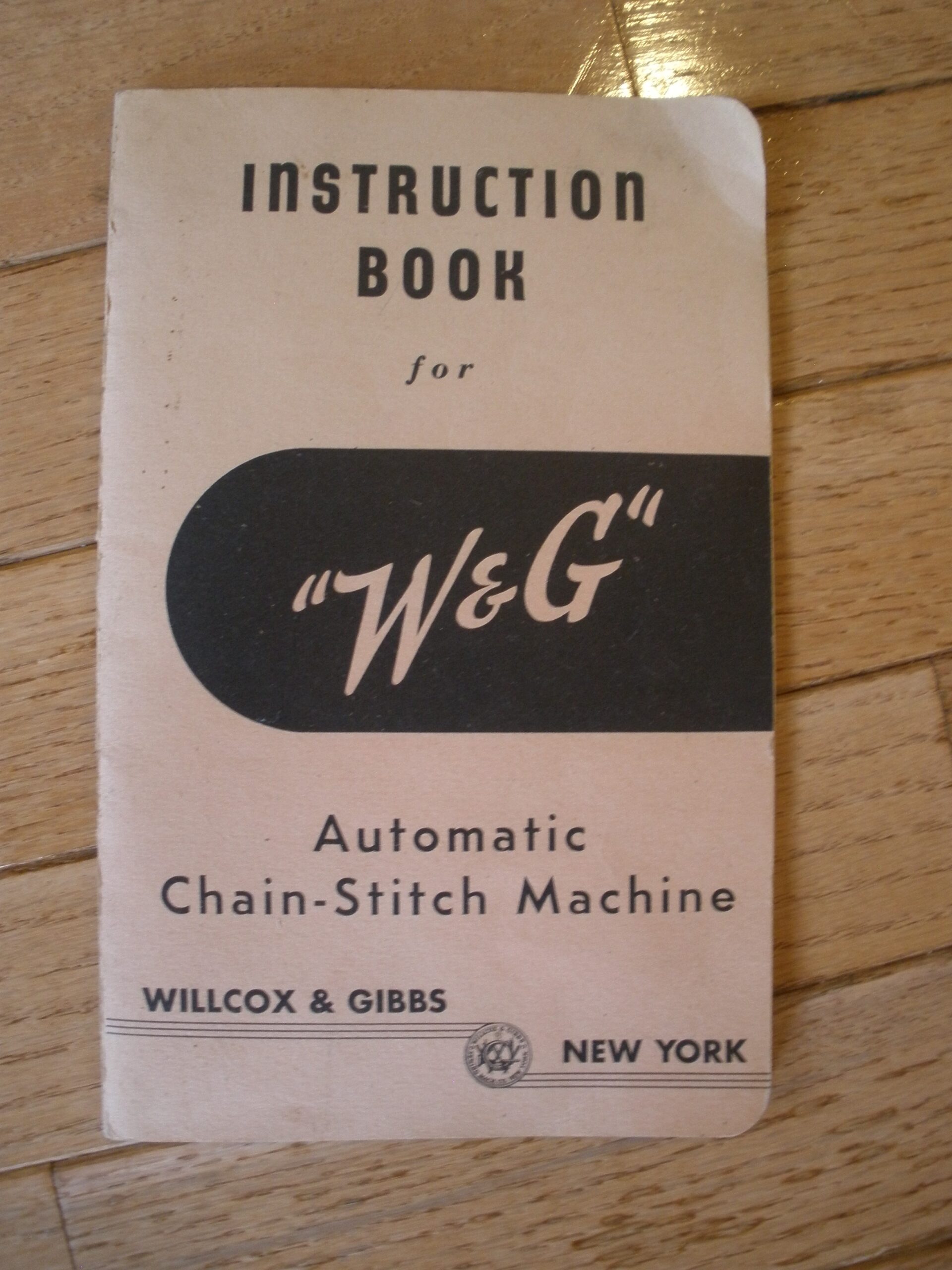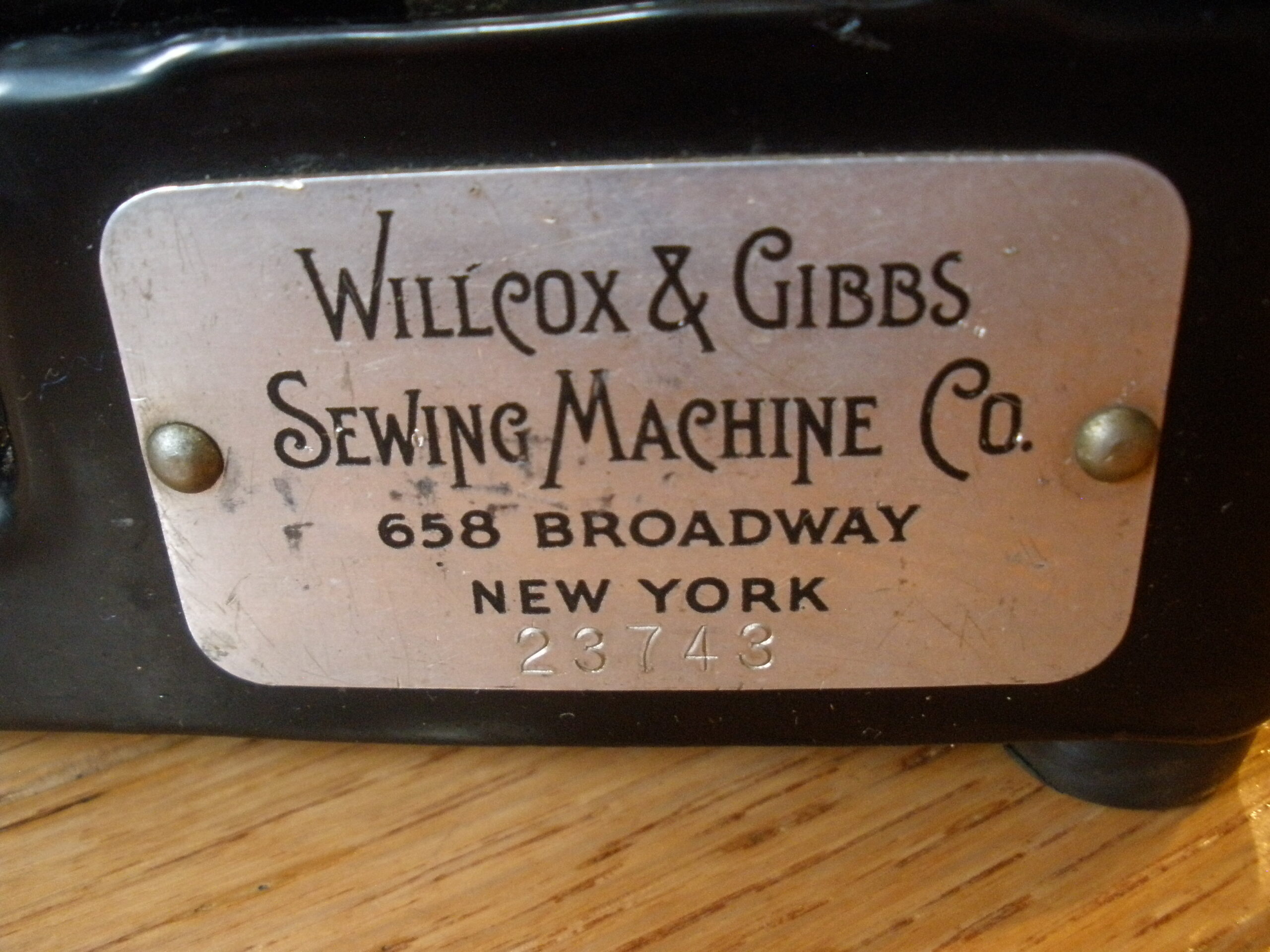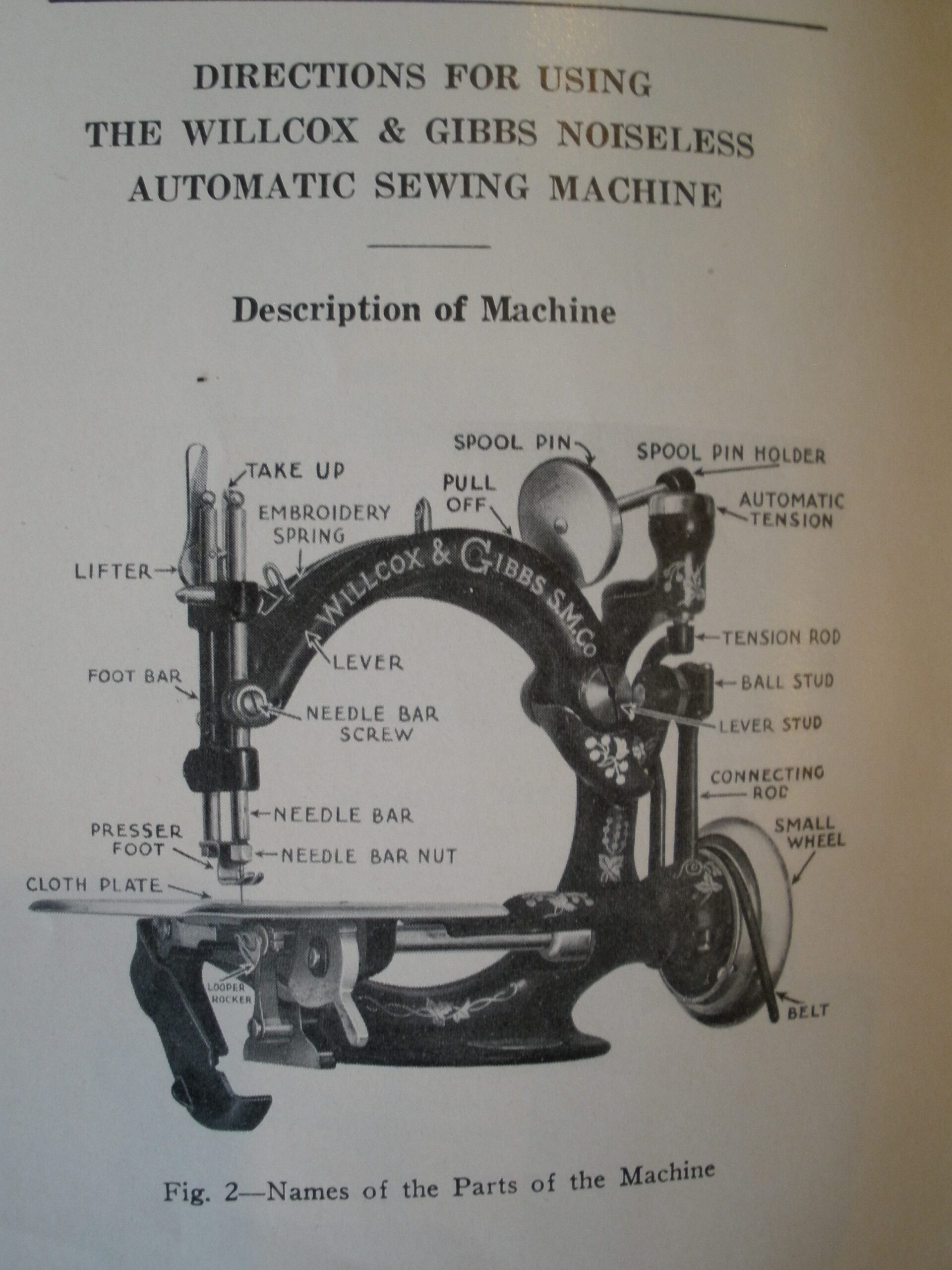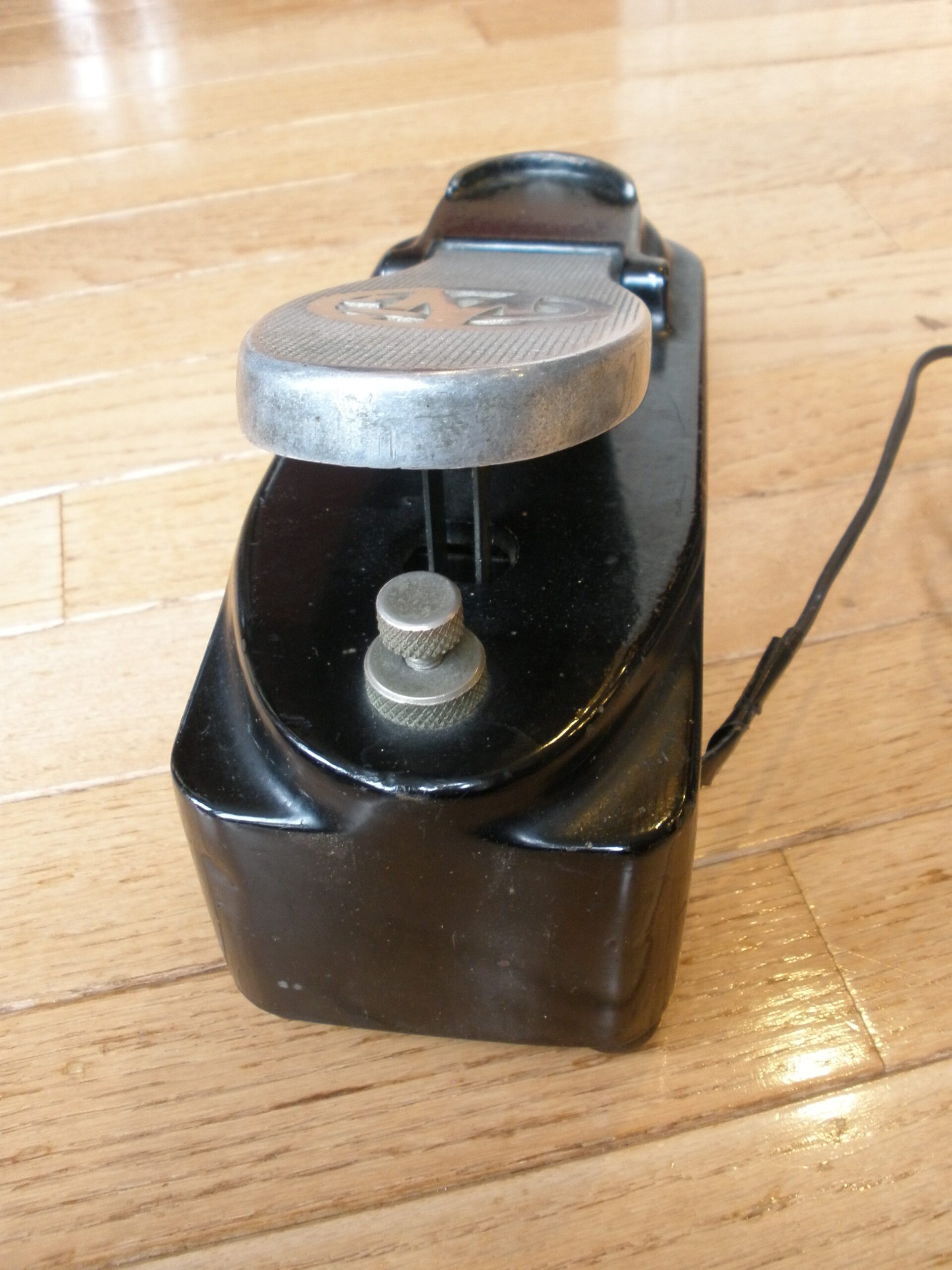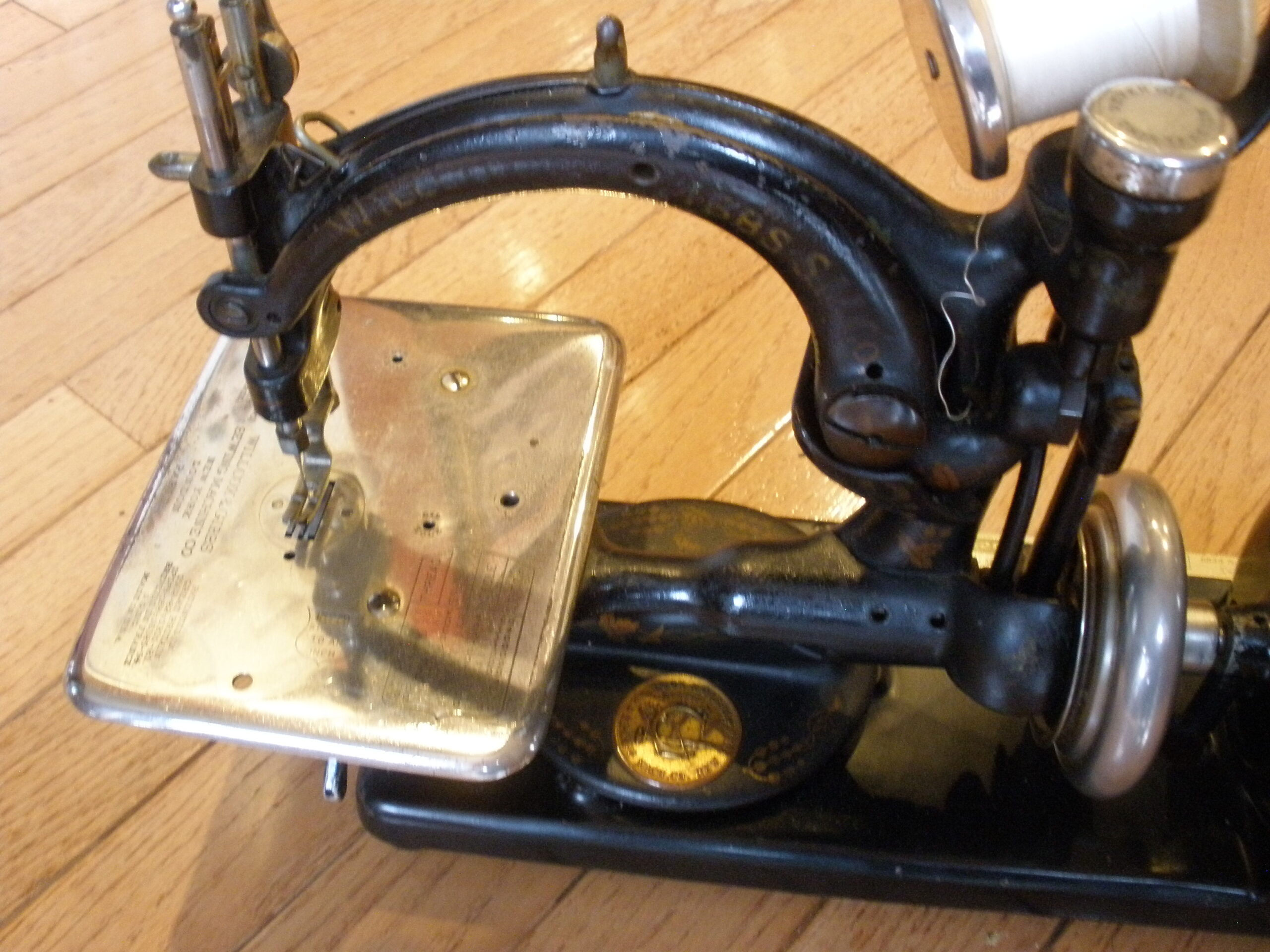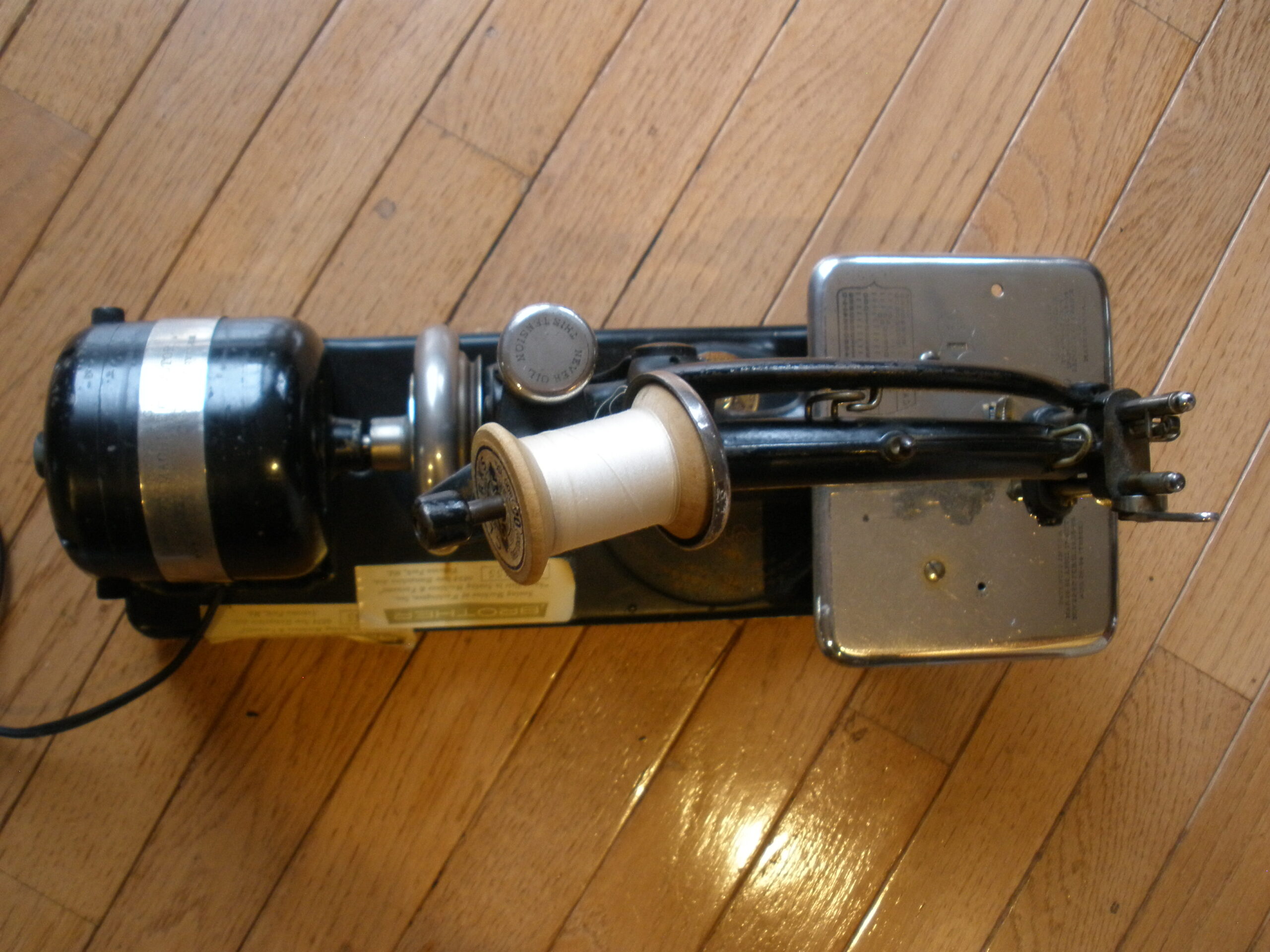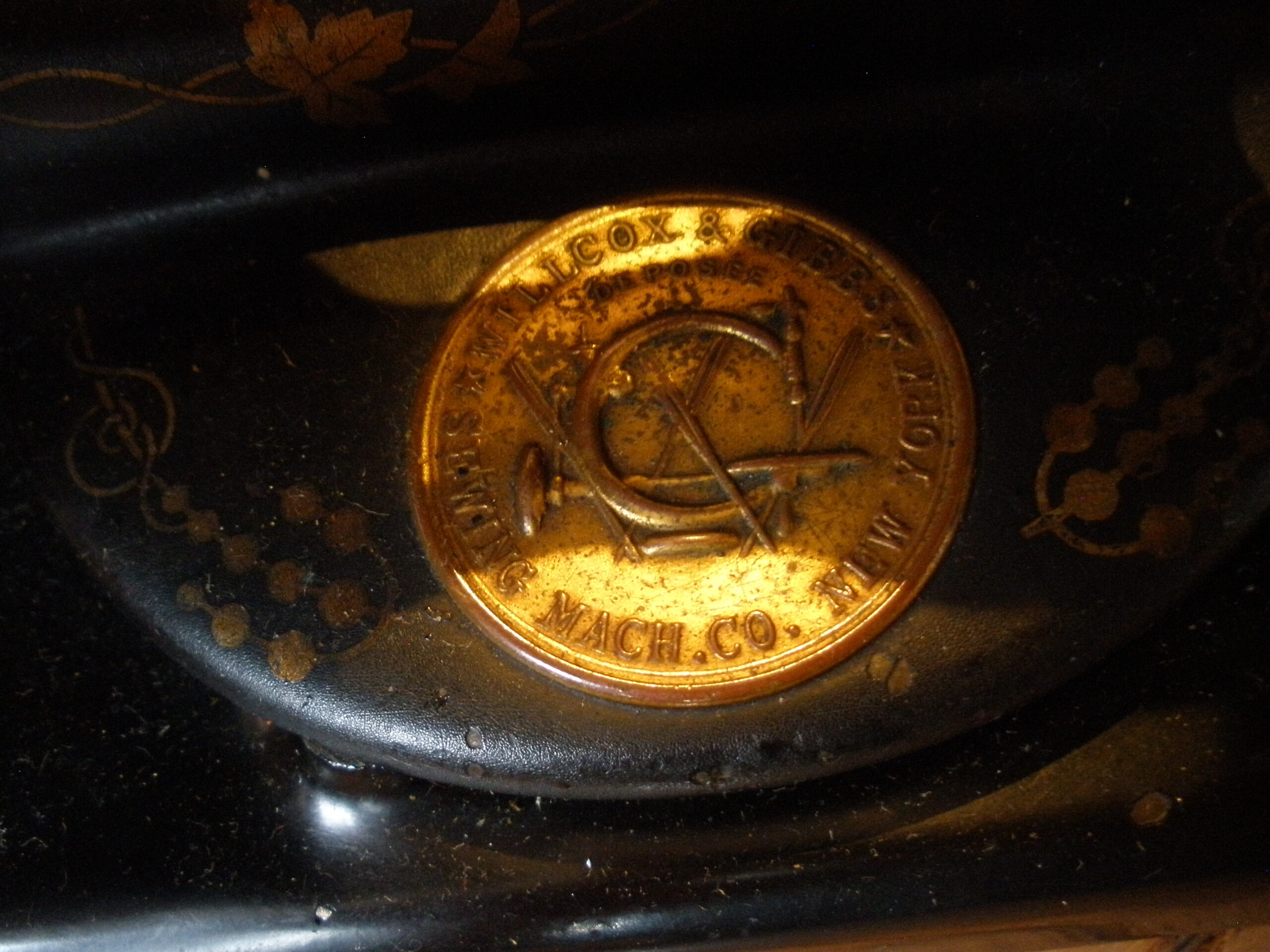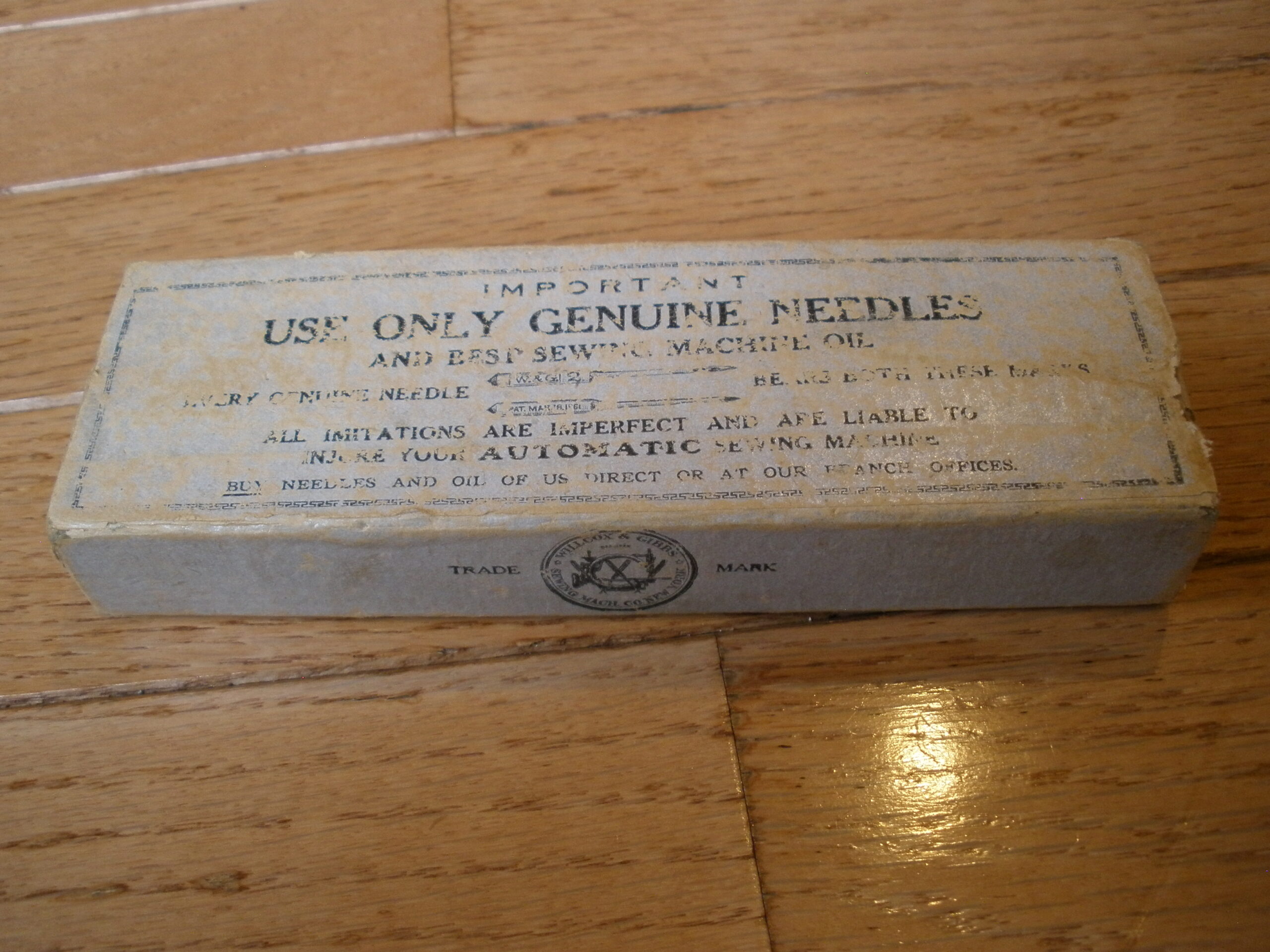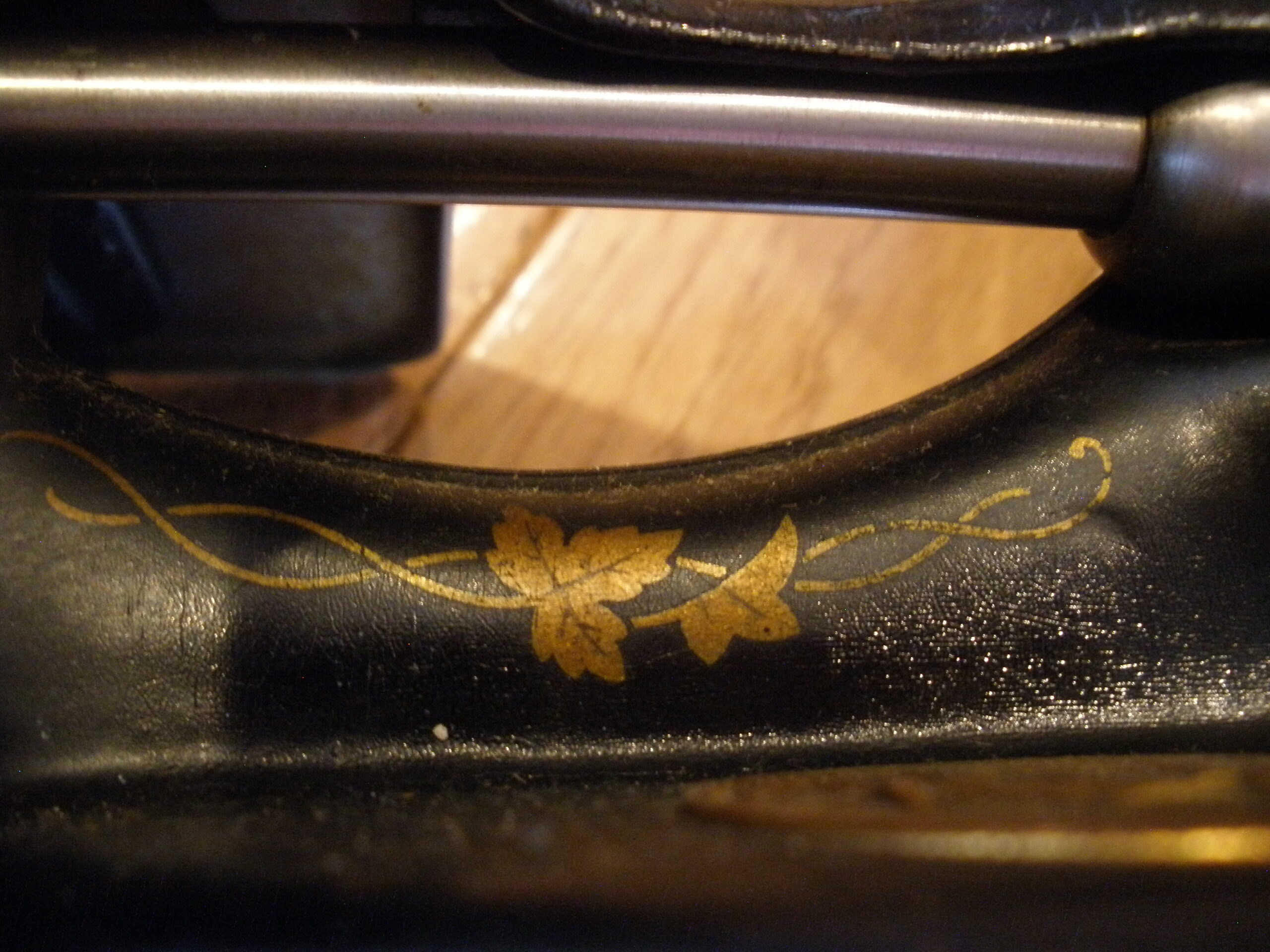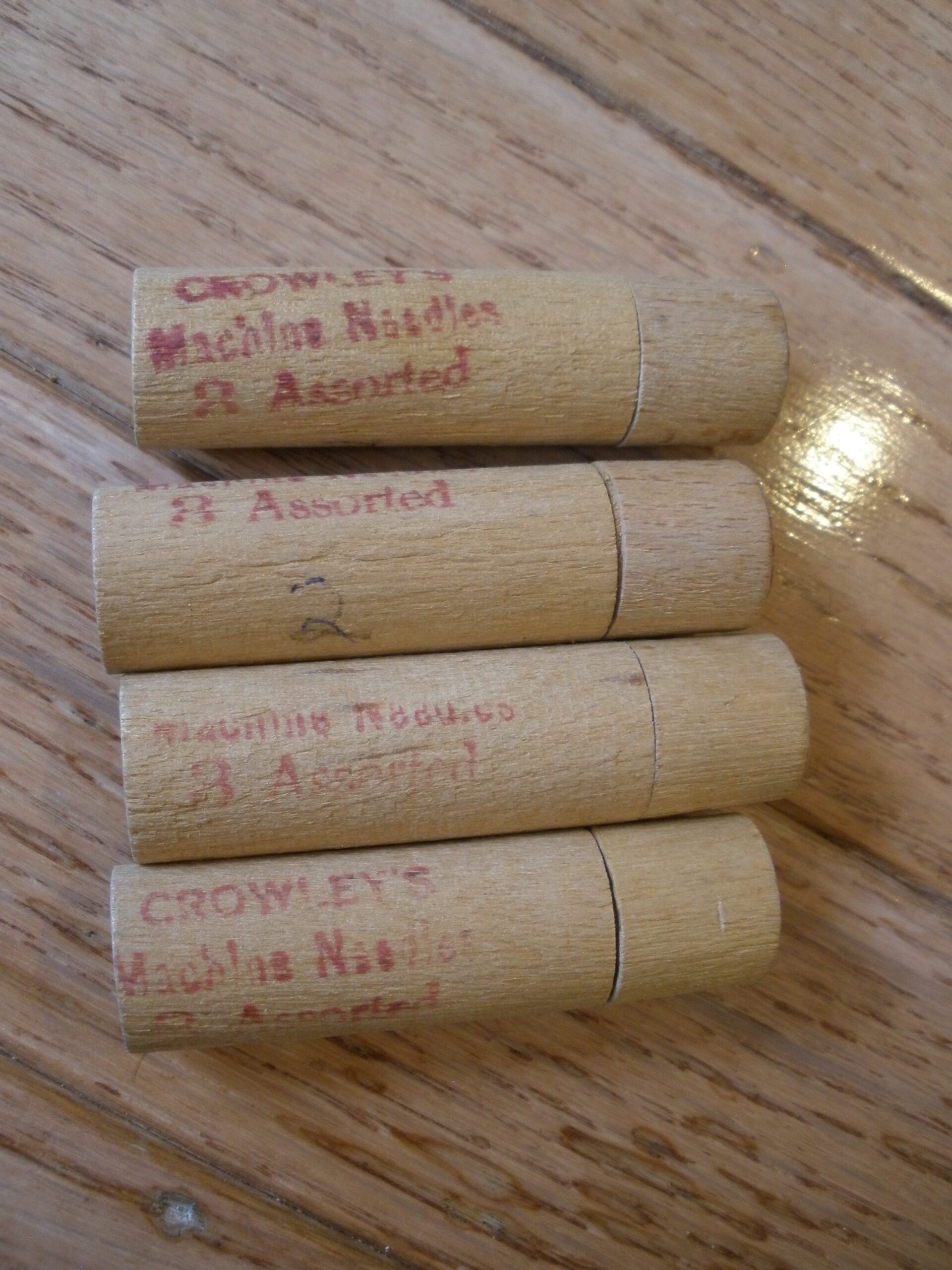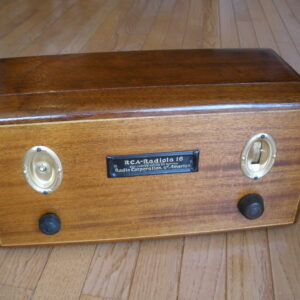For sale is a working early 1900s WILLCOX & GIBBS SEWING MACHINE, FOOT PEDAL, ACCESSORIES and ORIGINAL CARRY CASE from the Willcox & Gibbs Sewing Machine Company, 658 Broadway, New York, New York. The serial number for the machine is A690151. This “G” frame chain stitch sewing machine is in overall excellent condition. The machine motor runs well and the needle moves smoothly. This cast iron machine has ornate gold leaf decals that are worn but visible. The electrical cord on the the foot pedal has a small section that has been repaired with electrical tape. The machine base is marked with a circular brass maker’s mark badge. The interior of the top of the original carry case is marked with the iconic company logo. This machine has an automatic tension mechanism; an American style hand crank; a direct drive which is in line with the balance wheel; and a stitch length indicator numbers from 12 to 30. Sale includes the original operator’s manual. The cloth plate for this machine has a stitch length indicator as well as various patent dates for both the U.S.A. and Great Britain the last of which is 1894. The serial number for the machine motor is 23743.
The machine’s accessories includes (1) a Willcox & Gibbs Wrench used to raise the needle in the needlebar and to then tighten the retaining nut; (2) spare Willcox & Gibbs Needles; (3) Crowley’s Machine Needles; (4) an improved tuckmaker & box with a 1904 patent date; (5) an improved ruffler & original box; and other miscellaneous parts.
In the 1850s, James Gibbs devised a way to create a hook that allowed the machine to produce a chain stitch with a single thread. In 1857, convinced he could build a better sewing machine than singer, he created his own prototype and patented the design. In 1858, he partnered with James Willcox, and they began producing machines under the Willcox and Gibbs name. Short thereafter, the American Civil War separated the partners for a time, and as a Southerner, Gibbs lost most of his wealth. After the war ended, Gibbs borrowed a suit and walked from Virginia to the Willcox and Gibbs offices in New York City to reunite with his partner who preserved Gibbs’ stake in the company. The first Willcox and Gibbs sewing machines operated with a hand crank. Later, there was also a treadle version in a cabinet. Both machines were made of cast iron and had a graceful arched shape that formed the letter G for Gibbs. The machines are surprisingly small and compact, closer to the size of a 3/4 Singer than a full-sized machine.






